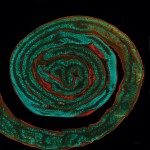Link to Pubmed [PMID] – 33139329
Link to DOI – 10.2337/db20-0578
Diabetes 2021 01; 70(1): 76-90
Besides cytoplasmic lipase-dependent adipocyte fat mobilization, the metabolic role of lysosomal acid lipase (LAL), highly expressed in adipocytes, is unclear. We show that the isolated adipocyte fraction, but not the total undigested adipose tissue (ATs), from obese patients has decreased LAL expression compared with that from nonobese people. Lentiviral-mediated LAL knockdown in the 3T3L1 mouse cell line to mimic the obese adipocytes condition did not affect lysosome density or autophagic flux, but it did increase triglyceride storage and disrupt endoplasmic reticulum cholesterol, as indicated by activated SREBP. Conversely, mice with adipose-specific LAL overexpression (Adpn-rtTA x TetO-hLAL) gained less weight and body fat than did control mice fed a high-fat diet, resulting in ameliorated glucose tolerance. Blood cholesterol level in the former was lower than that of control mice, although triglyceridemia in the two groups of mice was similar. The adipose-specific LAL-overexpressing mouse phenotype depends on the housing temperature and develops only under mild hypothermic stress (e.g., room temperature) but not at thermoneutrality (30°C), demonstrating the prominent contribution of brown AT (BAT) thermogenesis. LAL overexpression increased levels of BAT free cholesterol, decreased SREBP targets, and induced the expression of genes involved in initial steps of mitochondrial steroidogenesis, suggesting conversion of lysosome-derived cholesterol to pregnenolone. In conclusion, our study demonstrates that adipose LAL drives tissue-cholesterol homeostasis and affects BAT metabolism, suggesting beneficial LAL activation in anti-obesity approaches aimed at reactivating thermogenic energy expenditure.

